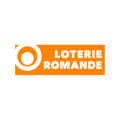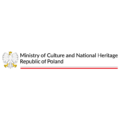Pologne, Terre d’Histoires [EN]
Roots & The Press
Roots (before 1918)
Before comics art took modern shape, some of its early forms emerged already in the first centuries of Polish history. The roots of Polish comics art go back to the very beginnings of the Polish state: works like the twelfth-century Drzwi gnieźnieńskie [Gniezno Doors], and the religious heritage of visual narratives, including lives of saints, stations of the cross, and many others. However, the founding fathers of Polish comics art were two Poles working abroad. Jan Ziarnko lived in Paris in the early seventeenth century, while Daniel Chodowiecki – in Berlin, in the late eighteenth century. The latter is considered to be a forerunner of visual novel. His prints adorn books by recognized German authors, while his 1773 Podróż z Berlina do Gdańska [Journey from Berlin to Danzig] paved the way for a whole new literary genre.
The nineteenth century saw further developments spurred by the growth of book illustration and the popularization of the press. Authors from this period include Jan Lewicki (Pamiętniki Jana Chryzostoma Paska [Diaries of Jan Chryzostom Pasek]), Artur Bartels (Łapigrosz [Penny-pincher], co-authored by Cyprian Kamil Norwid, Pan Atanazy Skorupa, człowiek postępowy [Mr Atanazy Skorupa, The progressive man), Franciszek Kostrzewski (Historya Jedynaczka w 32 obrazkach [Jedynaczek’s story in 32 pictures]) and Stanisław Lenc (Nowy kapelusz [The new hat], Kwestya przeprowadzenia kanału i ulicy przez Ogród Saski [The issue of running a canal and street through the Saski Garden]). It is particularly the last work that can be viewed as a representative of fully-fledged comics art.
Numerous distinguished periodicals would publish visual-and-narrative works by progenitors of Polish comics art, among them press titles such as Tygodnik Ilustrowany, Gazeta Warszawska, Wędrowiec, Przegląd Literacki, Kłosy, Kolce, and Mucha. Although Poland was partitioned at the time, these journals used the Polish language, which helped to lay the foundations for Polish culture in the future independent state.
These early stories narrated with the use of word and picture were predominantly satirical and focused on everyday life. However, they were far from today’s comics art because they would usually comprise up to several illustrations with accompanying description or dialogue. Development of picture-driven narratives intensified towards the end of this period, chiefly owing to inspirations taken from both forerunners and competing artists.
Main researcher of this period: Paweł Chmielewski
The Press (1918-1956)
The symbolic birth of Polish comics art is identified with the publication of the series Ogniem i mieczem, czyli przygody szalonego Grzesia [By fire and sword, or the adventures of crazy Grześ] by Kamil Mackiewicz and Stanisław Wasylewski in the Lviv magazine Szczutek. It tells the story of a Polish soldier who participated in the struggle for independence. Soon after, similar picture stories proliferated in the rapidly developing press. Their protagonists would fight the bolsheviks, and then racketeers, spies as well as other enemies of the state. Comics art became an inseparable part of dailies and weeklies.
The first Polish comics art heroes emerged in that period. In the 1930s, popularity was gained by Przygody Bezrobotnego Froncka [Adventures of the jobless Froncek] by Franciszek Struzik, published first in Siedem Groszy and then in album format. Another prolific author from the interwar period was Stanisław Dobrzyński, whose comics series were published in numerous magazines, for example Kubuś detektyw i jego pies Medor [Kubuś the PI and his dog Medor] in Express Ilustrowany. Credit is also due to Wacław Drozdowski, who launched his career with original comic strips and a remake of the Danish series Pat and Patachon, which was later developed into a full Polish version for Express Wieczorny Ilustrowany, a periodical published until 1939. After the Second World War, he focused solely on adventures of Polish protagonists, working until his death in 1951. His works from the later period include Wicek i Wacek for Express Ilustrowany.
At that time, foreign productions from Denmark, Sweden and USA would reach Poland. Many of these adventures were reprinted, remade or locally adapted. Parallel to this, press for children would develop rapidly, including Gazetka Miki, which featured reprints, alongside mass produced titles featuring Polish comics art: Moja Gazetka, Mój Kurjerek, and Grześ. In 1932, an album version of Przygody Koziołka Matołka [Silly the Billy-Goat] was published. The story by Kornel Makuszyński and Marian Walentynowicz has long been present on school reading lists in Poland.
In the 1930s, a specialized comics art journal Świat Przygód [World of adventures] was launched. Attempts were made to revive it after the war as Nowy Świat Przygód [New world of adventures] (1945-1948), but the turn of the forties and fifties was marked by the consolidation of the communist regime, which caused comics art to fade away.
Works from this period are characterized by a simple and caricature-based style. It was common to place the text below the picture, although bubbles would be occasionally used. Most works from that period were humorous and focused on everyday life, commenting on political, social and moral questions.
Main researcher of this period: Adam Rusek
Propaganda & Loss of speed
Propaganda (1956-1989)
In the period of transformations that began in 1956, known as the Polish thaw, comics art began to be perceived more favorably by the authorities, which helped it return to the press. The comics-focused magazine Przygoda [The Adventure] started coming out again, although for just a brief period of two years. However, comics art was able to take root in the scout magazine Świat Młodych, in satirical magazines Karuzela and Szpilki as well as in children’s magazines Świerszczyk and Miś. At the same time, Polish comics finally adopted the modern form, featuring text in bubbles and full panel composition. However, in the Polish People’s Republic most of these publications had propagandist functions, shaping specific civic attitudes and clearly defining enemies of the state. These premises served as the basis for broadly understood popular culture in the communist era, with comics series providing mass entertainment in genres such as thriller, military adventure, and the fantastic.
Many masters of Polish comics art debuted and made their careers in that period. In 1957, the magazine Świat Młodych first presented Tytus, Romek i A’Tomek by Henryk Jerzy Chmielewski. The humorous adventures of two scouts trying to humanize a chimpanzee ultimately filled as many as forty volumes, the last one published in 2021 when the 97-year-old author died. In 1958, the magazine Wieczów Wybrzeża launched the series Kajtek i Kokocreated by Janusz Christa, who also gained popularity with the series Kajko i Kokosz, which came to be recognized as the Polish Asterix. In the 1970s, Szarlota Pawel began the series Jonek, Jonka i Kleks. Her adventures of Kleks and then Kubuś Piekielny were among the most beloved series for children in that period.
The Polish People’s Republic saw the flourishing of comics that featured historical, military and criminal themes, including famous series such as Kapitan Żbik (about a militiaman; 1967-1982), Pilot śmigłowca (about military pilots), Kapitan Kloss (about a communist spy during the Second World War), and the series Legendy Polskie, which weaved history and myth. Contributors to these productions included famous comics artists like Grzegorz Rosiński, Jerzy Wróblewski and Bogusław Polch. Towards the end of the 1970s, the new comics art magazine Relax was established. This influential periodical boosted interest in this medium among the youth and elevated a range of artists to recognition, including figures such as Tadeusz Baranowski, Marek Szyszko, Zbigniew Kasprzak, Tadeusz Raczkiewicz and Andrzej Nowakowski.
PRL was also a time when comics art was taken up by artists usually associated with other areas in the visual arts, among them Szymon Kobyliński, Bohdan Butenko, Edward Lutczyn, Andrzej Mleczko and Jerzy Skarżyński.
Collapse… (end of the twentieth century)
The end of communism in 1989 entailed the downfall of its comics art market because Polish visual stories could not compete with publications by the Swedish company TM Semic, which put out American comics featuring superheroes from the Marvel and DC universes. In the second half of the 1990s, these new products were in turn pushed away from the market due to the sheer variety of entertainment offered by the dynamically expanding popular culture.
Polish comics art was kept afloat thanks to the magazine Komiks-Fantastyka, published since 1987 and renamed Komiks in 1990. It continued to present the series Funky Koval created in the 1980s by Maciej Parowski, Jacek Rodek and Bogusław Polch. In 1993, the first comics adaptation of The Witcher was released by these same artists.
This transformative period finally breathed new life into comics art as younger artists began to debut on the free market. In 1990, new magazines were launched, including Fan, Awantura, and later Super Boom! alongside Komiks Forum. These periodicals published new works by artists like Jacek Michalski, Sławomir Jezierski, Przemysław Truściński, Krzysztof Gawronkiewicz and Jerzy Ozga. However, these journals were short-lived and failed to rebuild the comics art market in Poland.
Comics art was gradually fading and struggling to attract social attention, although some recognition was retained by comics artists who debuted in the communist era and were continuously published since that time: Jerzy Wróblewski (Binio Bill), Tadeusz Baranowski (Historia wyssana z sopla lodu, co-authored by Jean Dufaux), Janusz Christa (Kajko i Kokosz: Mirmił w opałach and Pasowanie; Kajtek i Koko: Opowieści Koka), Henryk Jerzy Chmielewski (Tytus, Romek i A’Tomek, volumes XIX-XXV). Market success was also achieved by Polish artists who worked abroad: Grzegorz Rosiński (Yans, Szninkiel, Thorgal) and Zbigniew Kasprzak (Yans, under the pen name Kas).In the 1990s, Łódź hosted the Polish Convention of Comics Artists (currently the International Festival of Comics and Games), which proved to be an efficient means of stimulating comics art circles. The event helped to integrate young artists and fans, contributing to the rise of an alternative circulation in the form of zines. It was also a period of rapidly growing photocopied fan-made magazines such as AQQ, Komiks Forum, Ziniol, and Vormkvasa. Younger artists would self-publish independently, one particular success story being Ósma czara by Prosiak.
Zines and Rebirth & Children’s Comics
…Zines and Rebirth (beginning of the twenty-first century)
Thanks to the vibrant Polish comics art scene, this form was gradually revived. Zines were becoming increasingly professional and transformed into magazines like Z.N.A.Komiks, Arena Komiks, Komiks Antologia, and KKK. These periodicals would also present works by scores of younger artists. The only two missing pieces were regularity of publication, and broader circulation on the press market. These two foundations, however, were laid down towards the end of the 1990s. In 1998, the publishing house Egmont, which was already releasing Asterix and Donald Duck, made the decision to focus on comics and put out the magazine Świat Komiksu, which featured works by Polish artists, including Jeż Jerzy by Rafał Skarżycki and Tomasz Leśniak, Porady praktycznego Pana by Tadeusz Baranowski, and 48 stron by Tobiasz Piątkowski and Robert Adler.
The cult magazine Produkt was launched in 1999. It was created only by Polish artists and featured only Polish comics. The periodical was a springboard for series such as Osiedle swoboda by Michał Śledziński (editor-in-chief), Wilq (by the Minkiewicz brothers), Emilka, Tank i Profesor by Filip Myszkowski, Aurora by Śledziński and Andrzej Janicki, as well as Jeż Jerzy by Skarżycki and Leśniak. The magazine’s success and enthusiastic reception convinced many creators to publish independently and even to establish their own publishing houses, which helped to launch Zin Zin Press, Taurus Media, Mandragora, kultura gniewu, timof comics, and Ongrys. These publishers emerged from zine culture and turned professional in a matter of years, enriching the Polish comics market formed around Egmont at the beginning of the twenty-first century.
In this period, debut albums were released by Mateusz Skutnik (Rewolucje), Krzysztof Gawronkiewicz (Mikropolis with Denis Wojda, and Achtung Zelig with Krystian Rosiński), Piotr Kowalski (Gail), Ryszard Dąbrowski (Likwidator), Joanna Karpowicz (Jutro będzie futro), KRL (Liga Obrońców Planety Ziemia), and Aleksandra Spanowicz (Buty). Original comics art flourished because Polish comics artists worked outside the cultural mainstream and enjoyed the freedom to address any issues they wished. At the same time, the great number of comics art events towards the end of the first decade of the twenty-first century made it possible for authors to publish on their own, without corporate supervision.
It was in this period that the young Pole Marzena Sowa conquered France with the the comics book Marzi about growing up in communist Poland. Also at this time, Przemysław Truściński began making sketches for The Witcher – a video game that was about to catch the world’s attention.
Artistic Freedom and Children’s Comics
In the twenty-first century, the world of comics art has been dominated by visual novels. This genre also reached Poland and breathed new life into Polish comics. Many authors realized that this form does not have to be pure entertainment – whether in the guise of a thriller, fantasy story or historical narrative – but may also reach deeper and develop into a complex form without sacrificing its attractiveness to wider audiences. Creators would put out entire albums, stuffing them with whatever their drawers were holding, inching towards ever more innovative approaches. It was at this time that broader recognition was won by the award-winning author Wojciech Stefaniec, who created over twenty comics, including the series Bardo (with Daniel Odija) and Wróć do mnie jeszcze raz (with Bartosz Sztybor). Other notable authors working in this period were Jacek Świdziński (Zdarzenie 1908, Powstanie – film narodowy), Jakub Topor (Nacjolove, and the series Rodacy), Jacek Frąś (Glinno, Totalnie nie nostalgia with Wanda Hagedorn), Mateusz Skutnik (the series Rewolucje and Blaki), Prosiak (Będziesz smażyć się w piekle), and Rafał Szłapa (the series Bler).
A significant role in the development of the comics market was also played at the time by children’s comics, chiefly owing to the publishing houses kultura gniewu and Egmont, which strongly supported this segment of the market. This enabled many authors to flourish, specifically ones who created for adults but were able to gain recognition for their works geared toward younger audiences. One unquestionable star of children’s comics has been the biologist and self-taught visual artist Tomasz Samojlik. His works for children are not only entertaining but also have an educational function. Among them are the series Saga o Ryjówce, Umarły las (scripted by Adam Wajrak), Wiedźmun, or the latest production Detektyw Wróbel (also co-authored by Adam Wajrak). Another important creator is Berenika Kołomycka, whose series Malutki lisek i wielki dzik and Mika (script Agata Loth-Ignaciuk) have also won numerous awards. Many other comics series for children have been published, including exceptional works such as Bajka by Marcin Podolec, Detektyw Miś Zbyś by Piotr Nowacki and Marcin Jasiński, Tymek i Mistrz by Rafał Skarżycki and Tomasz Leśniak, and Kacper i spółka by Adam Święcki. There have also been successful attempts to revive famous children’s comics from the era of the Polish People’s Republic – notably Nowe przygody Kajka i Kokosza, and Binio Bill – as well as to present new works by Tadeusz Baranowski, one of the great masters from communist times, whose comics from that period have had numerous new editions.
Polish comics art is now flourishing. It has never been stronger and there are more authors working in this form than at any point in the past.
Power of Women
Throughout the twentieth century, Polish comics art has been dominated by men, despite notable exceptions like Szarlota Pawel, Ha-Ga, Graza (Grażyna Kasprzak, who has colored comics in the West), and Grażyna Dłużniewska. A gradual shift in this area has been noted since the fall of communism, with emerging young authors such as Aleksandra Czubek-Spanowicz, Joanna Sanecka, Sylwia Restecka and Dagmara Matuszak. Nevertheless, comics authored by women found it difficult to move beyond the boundaries of magazines.
In 2012, the anthology Polski Komiks Kobiecy [Polish Women’s Comics] was published with an extensive introduction by the volume’s editor Kinga Kuczyńska, clearly demonstrating that there are more and more women authors working in this medium. Still, women authors struggle with not being taken seriously in comics circles, although the tide has been turning and only the biggest chauvinists fail to recognize women’s contribution to comics art. Indeed, as time passes, it transpires that women have had a significant impact on the development of Polish comics art. Thanks to their courage and openness to new trends and ideas, they have been able to transform the medium and provide it with new momentum.
Aside from above-mentioned authors like Berenika Kołomycka and Marzena Sowa, more and more women authors have left their mark on original comics art. Works by Agata Wawryniuk (Rozmówki polsko-angielskie) and Anna Krztoń (Weż się w garść) demonstrate that women can achieve great success by telling their own stories. Their openness has helped to expose audiences to uncompromising forms. Joanna Karpowicz (Kwaśnie jabłko, written by Jerzy Szyłak, and Anastazja with Magda Lankosz) prove that comics can is capable of addressing serious topics. Wanda Hagedorn has excelled in the area of autobiographical essay, as is exemplified by Totalnie nie nostalgia (with drawings by Jacek Frąś) and Twarz, brzuch, głowa (with Ola Szmida). Gosia Kulik (Poczwarki) and Kasia Mazur (Zamaskowana) have notably experimented with the comics form. Unka Odya (Brom) and Kamila Król (Rusałka) have successfully incorporated Slavic mythology into their work. Maria Rostocka (Koniec lipca) has enjoyed success abroad and was the first Polish author to be nominated to the award presented at the festival in Angouleme. History has also been the focus of women authors like Aleksandra Herzyk (Wolność albo śmierć), Paulina Obutelewicz (Jastrzębia pieśń), and Katarzyna Witerscheim (Helena Wiktoria), who have proven that historical matters can be discussed without propagandist bias, as is sometimes the case with comics commissioned by state institutions.Indeed, women are gradually becoming the face of Polish comics art!
Bright future
What awaits Polish comics art? Where is it heading? These questions do not occur to many people in Poland because the pace at which this market has been developing does not often allow representatives of the comics world to stop and ponder on the future. However, it has become clear in recent years that there is no foreseeable end to intense changes, and this art form does have a bright future.
Comics art has conquered the internet in the form of webtoons, including their Polish flavors and platforms, gaining popularity among today’s young digital natives. Comics have also invaded art schools, which are becoming increasingly open to comics artists, who can now also graduate in this art form. Publishers and audiences have increasingly embraced experimentation, at the same time leaving enough space for pure entertainment. The comics market has room for both those working outside the world of comics, like Maciej Sieńczyk, and those strongly rooted in it, like Jakub Rebelka.
In recent years, Polish comics art has focused on historical narratives, as is exemplified by the duo Tobiasz Piątkowski and Marek Oleksicki, who take as their subject the Second World War (Bradl, Bazyliszki), Łukasz Wnuczek, who works with Slavic prehistory (Sława), and Jacek Świdziński, who describes the communist era (Festiwal, Brzask). More and more space is provided for works that avoid propaganda, or black-and-white visions of history.
In the near future it seems that a growing role is going to be played by two experimenting artists: Zavka (Promienie Xi) and Piotr Marzec (Słoma). Their works confirm that that comics can rise to a new level, while their interpretations requires not just the ability to read but also broader knowledge about art and culture. Aside from these two artists, waves have been made by Jakub Topor (Dziadostwo, Prywaciarz), whose focus and asset has been to observe and comment on social changes, making his works a mirror of Polish society.
An entire new generation of creators have made their debut in recent years. They are well versed in the comics aesthetic and in the art of storytelling. Without inhibitions, they draw on these resources to speak about any current affairs. Among them are Anna Poszepczyńska (Trzy siostry), Beata Pytko (Mord na dzielni), Basia Majkowska (Małpa), Krzysztof Łuczyński (Iskry), Rafa Janko (Mięcho), Ottoich (Zardzewiały tankowiec), and Falauke (Czy wszystko smakuje?).
It is also worth mentioning that self-publishing, rooted in the history of photocopied zines that played a leading role twenty years ago, has become an integral part of the comics market in the digital era, helping to present works by intriguing artists who wish to remain outside the publishing mainstream. Certainly, some artist are equally comfortable with working for big publishing houses and with releasing works on their own. Some of the most promising names in this area include Luiza Malinowska (Dziewiąte echo), Błażej Kurowski (Stachanowiec in Space), Dem (Czyjś syn), Łukasz Godlewski (Czarne serce), Edyta Kranc (Zebranie obowiązkowe), and Karolina Margielewicz (Blanc cartridge).
The future is already here!









